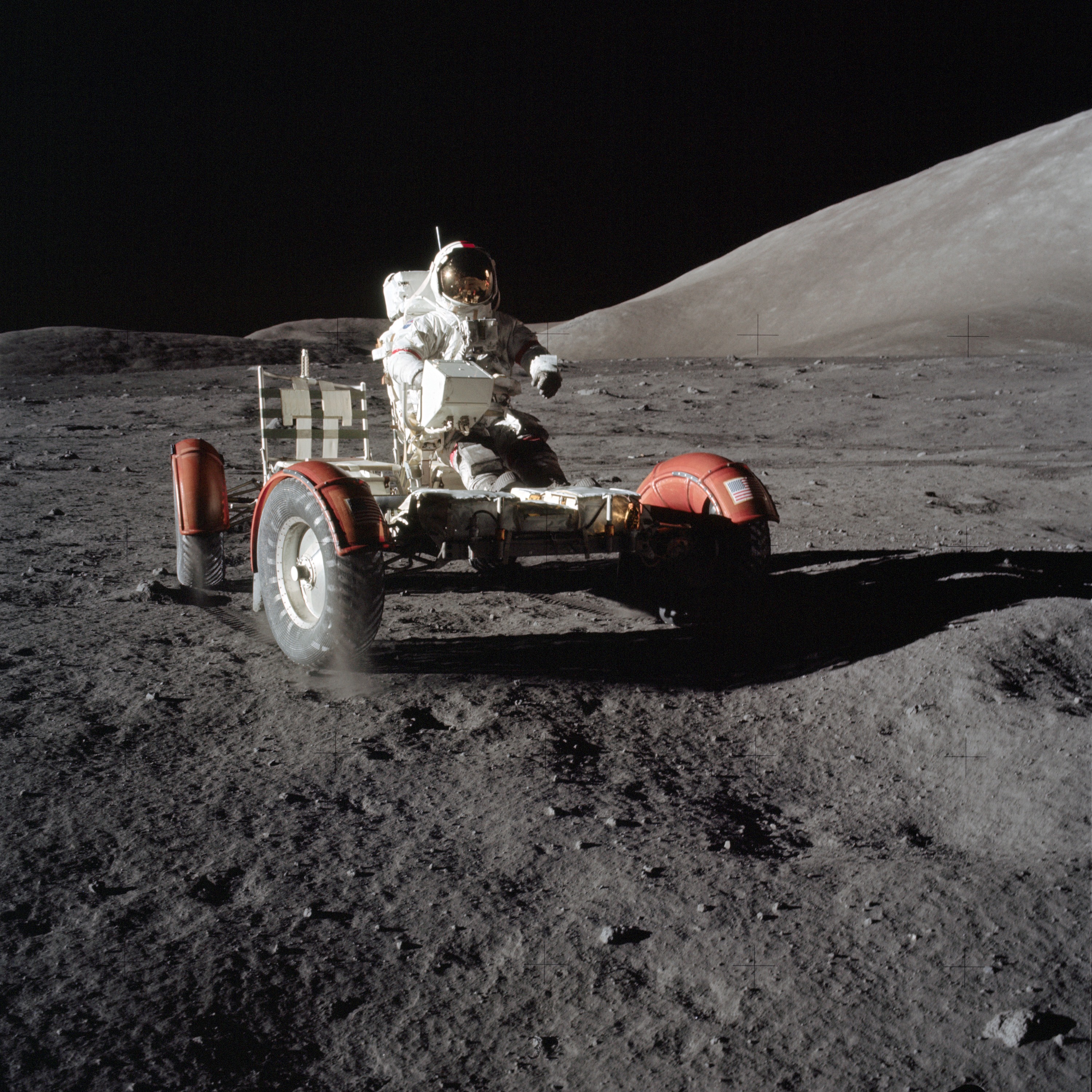Apollo 17 Landing Site, The Taurus-Littrow Valley

| Credit | NASA/GSFC/Arizona State University |
|---|---|
| Language |
|
Apollo 17 was the final mission of NASA's Apollo program, the most recent time humans have set foot on the Moon. Astronauts Eugene Cernan and Harrison Schmitt landed the Apollo 17 Lunar Excursion Module (LEM) within the Taurus-Littrow Valley—a key scientific goal of the mission was to collect rock samples from the Serenitatis basin rim to find out exactly how old it is. Learning more about when and how the basin formed would help provide scientists with information about the ages of lunar features and geologic time scales.
Geologists create timelines of geologic events. They date surfaces by looking at how the geologic formations and features overlap, and comparing these observations to laboratory-based measurements of sample ages. Before Apollo, all ages were relative estimates, i.e. one crater is older or younger than another. Visiting the surface of the Moon and collecting samples allowed geologists to better estimate specific dates for certain lunar features. Then, scientists applied the knowledge from the Apollo samples to other rocky moons and planets in our Solar System, to estimate dates for geologic events on their surfaces.
Before the samples were returned, most lunar geologists believed the Serenitatis basin to be relatively old amongst all lunar basins. When the ages came in from the Apollo 17 samples, it appeared that the Serenitatis basin was younger than previously thought! Even with samples, questions on the age of Serenitatis remain owing to the challenges of collecting rocks in the lunar environment. Because the Moon has been impacted so many times, the lunar surface has been churned and battered — rocks collected in one place may not have originated there. Samples collected by future robotic or human missions and analyzed with modern technology may solve this mystery.
Nearly fifty years have passed since humans last walked on the Moon. NASA plans to return to the Moon with the Artemis missions for scientific discovery, economic benefits, and inspiration for a new generation of explorers!
Author: Caroline Capone
Science Advisors: Sarah Valencia and Andrea Jones
